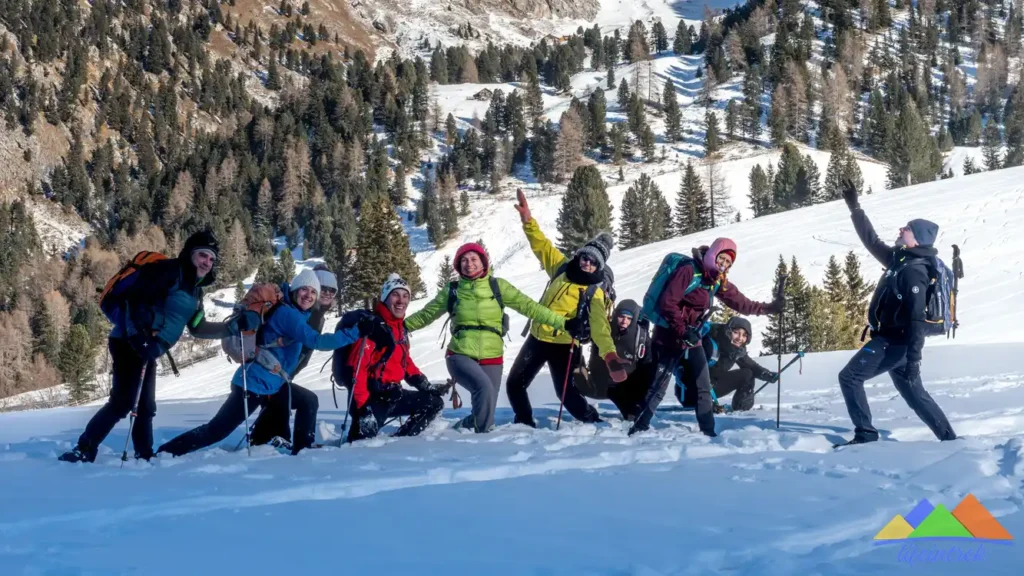Estimated reading time: 5 minuti
The love for nature and outdoor physical activity are a boon for the body and mind but you need to protecting yourself from the sun during trekking or hiking.
However, when venturing out on a trek or hike, protection from the sun’s rays becomes a crucial aspect not to be underestimated. The damage caused by the sun can be serious and long-lasting, so it is essential to take appropriate preventive measures.

The “invisible” dangers of the sun during outdoor activities:
- Sunburn: a wake-up call: Sunburn is the first sign of excessive exposure to UV rays. The skin turns red, becomes painful, and in more severe cases, blisters may appear. In addition to the immediate discomfort, repeated sunburns increase the risk of developing skin cancer.
- Premature skin aging: wrinkles and dark spots: Prolonged exposure to the sun accelerates skin aging, causing the early appearance of wrinkles, dark spots, and other signs of aging. This happens because UV rays damage collagen and elastin, the proteins that keep the skin young and elastic.
- Eye damage: a silent threat: UV rays can damage eyesight, increasing the risk of developing cataracts, pterygium (an abnormal growth of the conjunctiva), and other eye diseases. The damage can also be long-term and lead to serious vision problems in old age.
- Skin cancer: the most serious risk: Excessive exposure to the sun is one of the main risk factors for developing skin cancer, including melanoma, the most dangerous type of skin cancer. Prevention is key, and sun protection is one of the most effective weapons.

How to protect yourself from the sun during trekking and hiking: a complete guide:
- Sunscreen: the number one defense weapon: Sunscreen is an indispensable ally in the fight against sun damage. Choose a cream with an SPF (Sun Protection Factor) of at least 30, but ideally 50 or higher, especially if you have fair or sensitive skin. Apply the cream generously to all exposed areas of the sun, 20-30 minutes before going out. Remember to reapply the cream every two hours, especially after sweating or getting wet. Do not forget the often neglected areas, such as the ears, nose, neck, and back of the hands.
- Cocoa butter for the lips: a small gesture, great protection: The lips are particularly vulnerable to sunburn, as the skin is very thin and delicate. Use a cocoa butter with SPF to protect them from UV rays and keep them hydrated.
- Hat: a stylish accessory that protects: Wearing a wide-brimmed hat is a great way to protect your face, ears, and neck from the sun. Choose a lightweight and breathable hat, possibly with a brim that also covers the nape of the neck.
- Sunglasses: not just for style: Sunglasses with UV protection are essential to protect your eyes from sun damage. Make sure your sunglasses block at least 99% of UVA and UVB rays.
- Appropriate clothing: a barrier against the sun: Wearing light and breathable clothing that covers most of the body is an excellent strategy to protect yourself from the sun. Choose quick-drying fabrics and light colors, which reflect sunlight.
- Shade: a refuge in the hottest hours: During the hottest hours of the day (generally between 10:00 am and 4:00 pm), try to avoid direct exposure to the sun. Rest in the shade, under a tree or an umbrella, to give your skin a break.
- Hydration: an ally against sunburn: Drinking plenty of water is essential to keep the body hydrated and help prevent sunburn. When you are exposed to the sun, your body loses fluids more quickly, so it is important to drink regularly to replenish lost fluids.
Additional tips for optimal sun protection:
- Choose a sunscreen that is water and sweat resistant, especially if you plan to do intense physical activity or sweat a lot.
- Apply sunscreen 20-30 minutes before going out in the sun to allow the skin to absorb it properly.
- Do not forget to protect the often neglected areas, such as the ears, nose, neck, and back of the hands.
- If you have particularly sensitive skin, consult a dermatologist to choose the most suitable sunscreen for your needs.
By following these simple tips, you can enjoy your mountain hikes in complete safety, protecting your skin from sun damage and preserving your long-term health.
